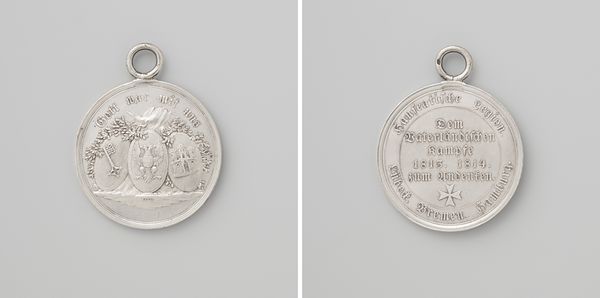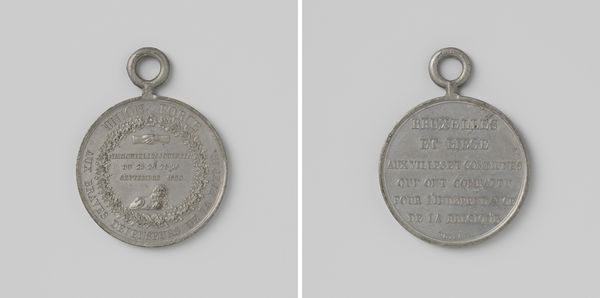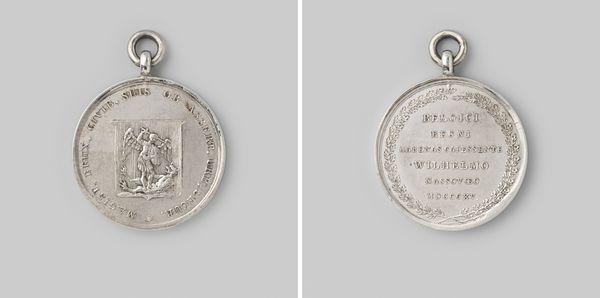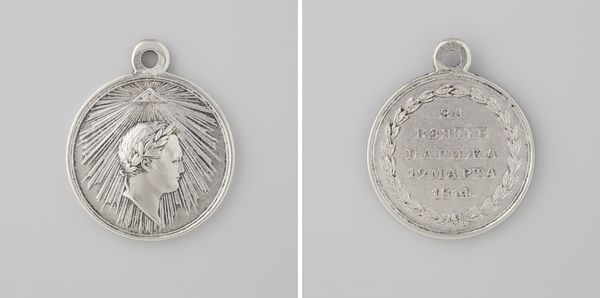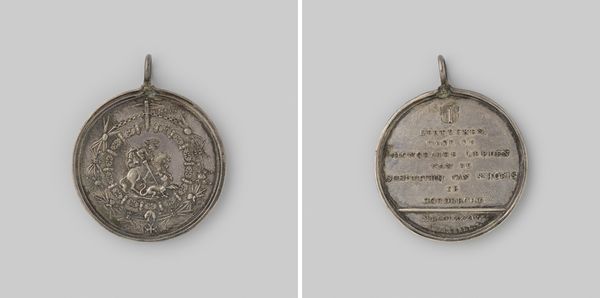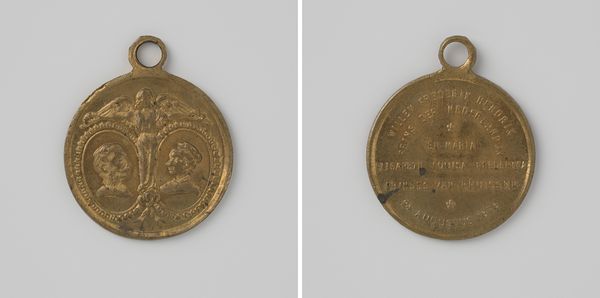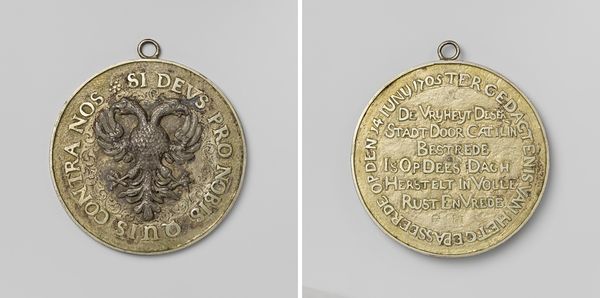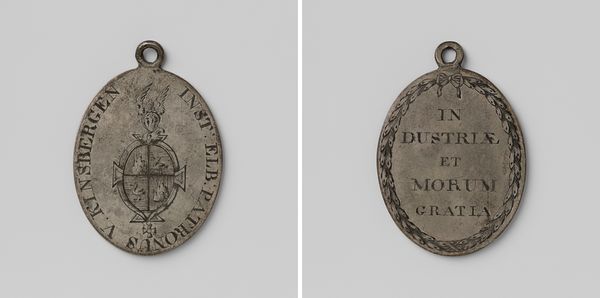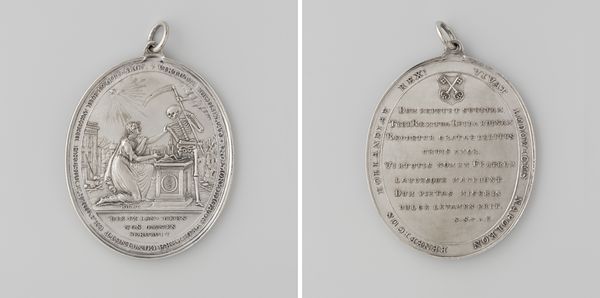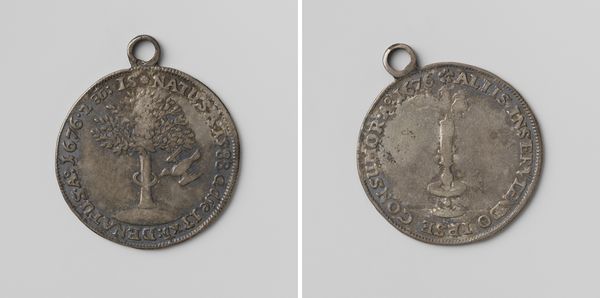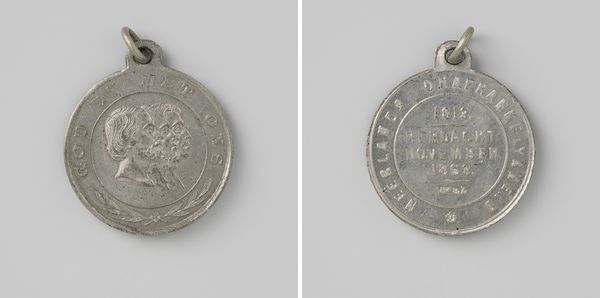
silver, metal
#
portrait
#
silver
#
baroque
#
metal
#
miniature
Dimensions: diameter 7.4 cm, diameter 6.6 cm, diameter 6.1 cm, weight 357 gr
Copyright: Rijks Museum: Open Domain
Curator: This exquisite piece is a memorial miniature crafted in 1697. Its title is "Overlijden van Anna Sophia Matthaeus, vrouw van G. Sixtus," which translates to "The Death of Anna Sophia Matthaeus, wife of G. Sixtus." Editor: It's remarkable, isn't it? There's an almost austere beauty to its monochromatic silver surface, which conveys an impression of solemnity appropriate to the commemoration of death. What catches my eye most immediately is the intricacy of the design. Curator: Indeed, the craftsmanship is noteworthy. This memorial was likely commissioned by Anna Sophia’s husband, G. Sixtus. Silver as a material would have represented not just a financial investment, but also an appeal to notions of purity and remembrance deeply embedded in the society of that time. These were not mass-produced keepsakes. Each one reflects distinct economic conditions of production. Editor: I am struck by the central image— the image looks like the a phoenix rising. Is there some connection there that’s metaphorical? Furthermore, let’s look closely at how the engraved text and its visual weight gives visual definition, contrasting dark text on the light background of the miniature. What can we infer? Curator: The Phoenix speaks directly to ideals of rebirth and resurrection; the inclusion on a memorial underscores prevailing beliefs about life, death and afterlife that marked late 17th century Europe. Moreover, these keepsakes offered solace in the face of loss. The fact that Latin, not the vernacular, has been employed is additionally instructive for defining the precise level of clientele for this silversmith's craft. Editor: An incredibly thought-provoking piece, the artist manages to create depth and texture simply through carving on metal. Curator: Ultimately, we see in this silver memento mori the fusion of artistry, mourning, belief, and craftsmanship—revealing facets about class, culture, and social mores during the late 17th century. Editor: Yes. An important, albeit small piece that helps unpack that period in terms of ritual and craft!
Comments
No comments
Be the first to comment and join the conversation on the ultimate creative platform.
